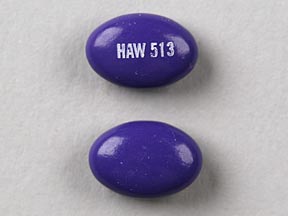Hyoscyamine / methenamine / methylene blue / phenyl salicylate Side Effects
Medically reviewed by Drugs.com. Last updated on Jul 11, 2023.
Applies to hyoscyamine / methenamine / methylene blue / phenyl salicylate: oral capsule, oral delayed release tablet, oral tablet.
You should not use this medicine if you are allergic to hyoscyamine, methenamine, methylene blue, or phenyl salicylate.
Before taking this medication, tell your doctor if you have any type of heart problem (congestive heart failure, coronary heart disease, a heart valve or heart rhythm disorder), glaucoma, an enlarged prostate, bladder obstruction, myasthenia gravis, a stomach ulcer or obstruction, or if you are allergic to belladonna (Donnatal and others).
Drink plenty of liquids while you are taking this medication.
Many drugs can interact with this medicine. Also, hyoscyamine can make it harder for your body to absorb other medications you take by mouth. Tell your doctor about all your medications and any you start or stop using.
If you have an eye exam and your pupils are dilated with eye drops, tell the eye doctor ahead of time that you are using hyoscyamine, methenamine, methylene blue, and phenyl salicylate.
Methylene blue will most likely cause your urine or stools to appear blue or green in color. This is a normal side effect of the medication and will not cause any harm.
Get emergency medical help if you have signs of an allergic reaction: hives; difficult breathing; swelling of your face, lips, tongue, or throat.
Stop using this medication and call your doctor at once if you have:
-
severe dizziness, blurred vision, fast heart rate;
-
agitation, confusion, feeling restless or excited;
-
painful or difficult urination; or
-
feeling short of breath.
Common side effects may include:
-
mild dizziness;
-
drowsiness; or
-
flushing (warmth, redness, or tingly feeling).
This is not a complete list of side effects and others may occur. Call your doctor for medical advice about side effects.
More about hyoscyamine / methenamine / methylene blue / phenyl salicylate
- Check interactions
- Compare alternatives
- Reviews (17)
- Drug images
- Dosage information
- Drug class: urinary antispasmodics
Related treatment guides
Further information
Always consult your healthcare provider to ensure the information displayed on this page applies to your personal circumstances.
Some side effects may not be reported. You may report them to the FDA.

